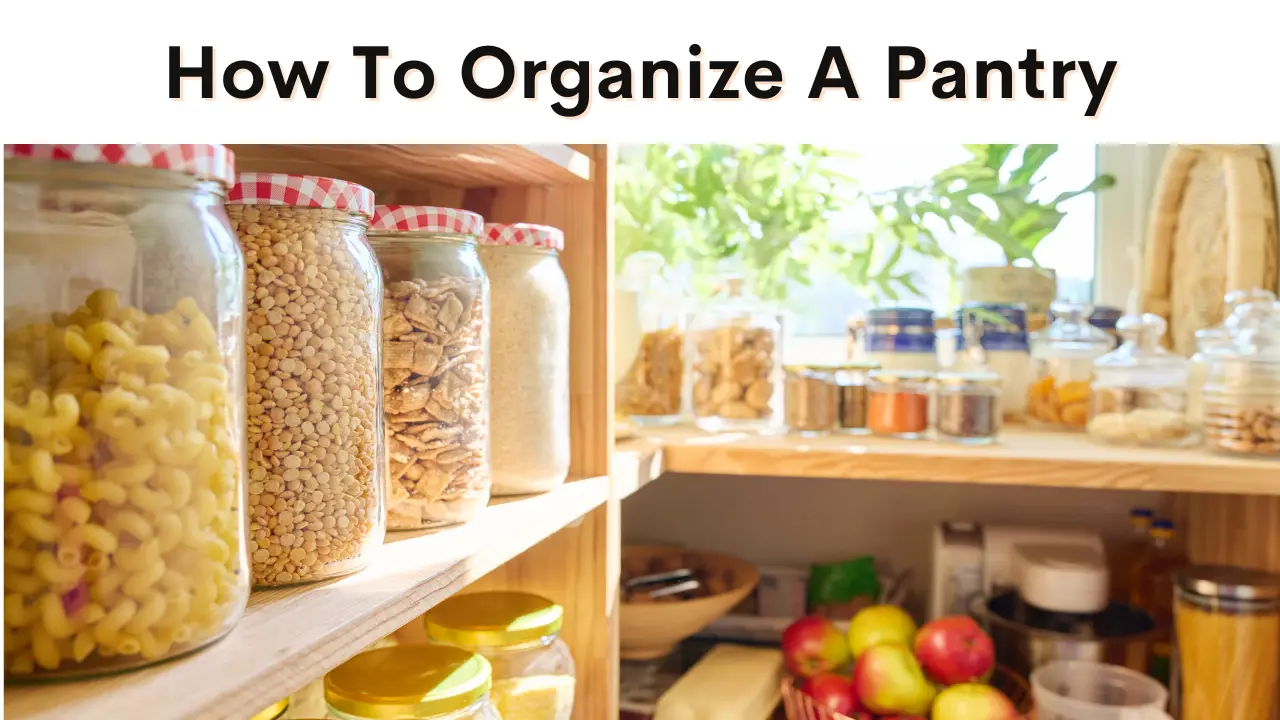Do you ever wonder if certain words are specific to American or British English? Well, one word that often sparks this curiosity is ‘pantry.’ You may have come across this term while watching a cooking show or reading a recipe, but have you ever stopped to ponder its origins and whether it belongs to American English or British English?
In this article, we will explore the fascinating history and usage of the word ‘pantry’ in both American and British English, shedding light on its cultural and linguistic significance. As you delve into the origins of the word ‘pantry,’ you will uncover a rich tapestry of etymology that stretches back centuries. So, is Pantry American or British?
Is Pantry American Or British? The term “pantry” is generally American. In American English, a pantry refers to a small room or storage area for food. In British English, a similar space is often called a larder.
While ‘pantry’ is commonly associated with food storage and kitchen organization, its roots can be traced back to the Latin word ‘panis,’ meaning ‘bread.
This connection to bread is no coincidence, as pantries traditionally served as storage spaces for bread and other perishable food items.
But how did this term evolve differently in American and British English?
Join us on this linguistic journey as we explore the nuances and historical context behind the usage of ‘pantry’ in these two distinct English dialects.
Origins and Etymology of the Word ‘Pantry’
The word ‘pantry’ derives from the Old French word ‘Panettiere’, which originally referred to a room where bread was stored, giving us a glimpse into the culinary practices of medieval times.
The origins of the word can be traced back to the Latin word ‘panis’, meaning bread. As bread was a staple food during that era, it was essential to have a designated space to store it.
The etymology of ‘pantry’ showcases the importance of bread in the daily lives of people in medieval times. The word eventually evolved to encompass a broader meaning, referring to a room or a small area where food and provisions were kept.
Over time, the concept of a pantry expanded to include various types of food storage areas found in households.
The understanding of the origins and etymology of the word ‘pantry’ sheds light on the historical significance of this space in the culinary practices of the past. It serves as a reminder of how food storage has evolved, from a simple bread storage room to a versatile area for keeping a wide range of food items in homes today.
Usage of ‘Pantry’ in American English
Imagine opening up your kitchen cabinets and finding a little room filled with all your snacks and ingredients, where you can easily grab what you need. That’s what a pantry in American homes is like.
In many American households, the pantry serves as a designated storage space for food items, often located near the kitchen. It is a convenient and efficient way to organize and access various food staples, such as canned goods, cereals, and baking supplies. The pantry is not only a functional space but also holds cultural significance in American homes.
Having a pantry is deeply rooted in American culinary traditions and reflects the importance of stocking up on food supplies. Historically, pantries were used to store perishable items like meat and dairy products, as well as preserves and canned goods. In modern times, the pantry has evolved to accommodate a wide range of food items, reflecting the diverse eating habits of Americans. It symbolizes preparedness, self-sufficiency, and the ability to provide for one’s family.
The pantry also represents a sense of abundance and comfort, as having a well-stocked pantry ensures that one will never go hungry. Whether it’s a quick snack or ingredients for a home-cooked meal, the pantry in American homes plays a vital role in providing easy access to food and contributing to the overall convenience of daily life.
Usage of ‘Pantry’ in British English
Get ready to explore a whole new world of culinary organization and convenience in your kitchen cabinets with a little room filled with all your snacks and ingredients.
In British English, the term ‘pantry’ is commonly used to refer to this magical space. Unlike the American pantry, which tends to be larger and more spacious, the British pantry is often a smaller, more compact area.
To help you visualize the British pantry, imagine a cozy nook tucked away in a corner of your kitchen. It’s filled with neatly stacked shelves, holding an array of jars filled with jams, chutneys, and pickles. On one shelf, you’ll find a collection of tea boxes, ranging from traditional English breakfast to aromatic herbal blends. And of course, no British pantry is complete without a tin of biscuits, ready to be enjoyed with a cup of tea.
Next, picture a row of hooks on the wall, displaying an assortment of kitchen utensils and tools. From wooden spoons to pastry brushes, everything’s within easy reach, making cooking a breeze. Finally, imagine a small countertop with a vintage scale, where you can weigh your ingredients precisely for that perfect British bake.
The British pantry is a charming and efficient space, designed for easy access to all your culinary essentials. It may be smaller than its American counterpart, but it’s filled with character and functionality.
So, why not create your own little slice of British culinary heaven and embrace the charm of a British pantry in your kitchen?
Historical Context and Evolution of the Term
Contrary to popular belief, the term ‘pantry’ has undergone significant changes over time, reflecting the evolving needs and trends in culinary culture. In the historical context, the pantry was originally a small room or closet used for storing food, dishes, and cooking utensils. It served as a storage space for ingredients and a preparation area, often equipped with shelves, cabinets, and a worktable. However, as the years went by, the design and purpose of pantries evolved to meet the changing needs of households.
The evolution of pantry design can be seen in the transition from traditional pantries to modern kitchen pantries. Traditional pantries were separate rooms, located away from the kitchen, where food was stored and prepared. They were designed to keep food fresh and protected from pests. As kitchens became smaller and more integrated into the rest of the house, the need for a separate pantry diminished.
Modern kitchen pantries emerged as a solution to provide storage space and organization within the kitchen itself. These pantries often include built-in shelves, cabinets, and drawers, allowing homeowners to keep their ingredients and kitchen tools neatly arranged and easily accessible.
The cultural significance of pantries cannot be ignored. They have long been associated with the idea of home and family. Pantries were not only a practical space for storing food but also a symbol of abundance and hospitality. In many households, the pantry was a place where homemade goodies were kept, ready to be shared with guests or enjoyed by the family.
The pantry also served as a reflection of the household’s economic status and social standing, with larger, more well-stocked pantries indicating wealth and prosperity. Today, while the design and purpose of pantries may have changed, their cultural significance remains. They continue to be a space where food is stored, prepared, and shared, representing the heart of the home and its connection to nourishment and hospitality.
Conclusion
In conclusion, is Pantry American or British? The word ‘pantry’ has its origins in both American and British English, but its usage and meaning have evolved differently over time.
In American English, a pantry typically refers to a small storage area in a kitchen used for storing non-perishable food items. It’s often considered a functional space that is separate from the main kitchen area.
On the other hand, in British English, the term ‘pantry’ has a broader meaning and can refer to a room or cupboard used for storing various household items, including food, dishes, and cleaning supplies. It’s often seen as a more traditional and formal part of the house, reflecting its historical significance.
The different usage and connotations of ‘pantry’ in American and British English can be attributed to cultural and historical factors. While both countries have preserved the term, they’ve adapted it to suit their own needs and traditions.
So, whether you’re in America or Britain, the pantry remains a vital space in the home, albeit with some differences in its purpose and design.










